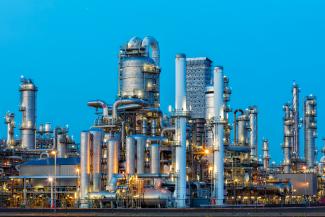When piping was first used in a built environment 1000s of years ago, it revolutionised where and how communities could exist. The Minoans used clay pipes for water transport, as did the Egyptians in 2500 BC, allowing settlements further away from a water source. The Egyptians were also the first to use copper pipes in wells, bringing water from 100 metres below the surface. Around 2000 BC, the Chinese used hollow bamboo reeds to move water and natural gas. Since then, the importance of reliable, fit-for-purpose piping has only increased.
Piping standards are evolving
Today’s piping systems may carry hazardous fluids, oils, gases and even strategic data over massive distances. They do so in unstable environments, demanding wide-ranging flexibility and durability.
Knowing the limitations of piping design and applying that knowledge correctly becomes more critical every year. Pipes and piping components must meet the internationally accepted ASME B31 Codes for Pressure Piping. Some sectors publish extra standards for managing specific substances like chlorine or LPG.
Jim E. Meyer, ASME member and contributor to the B31.1 and B31.3 Code for over 40 years, says the Code was originally written for a much narrower industry scope.
“B31.3 used to be written for Refinery Piping, now it covers just about everything. As industries change, they still use pipe. Even renewable energy sources require piping, just using different fluids to traditional energy generation.”
Ultimately, it comes down to the engineering team to handle the design of piping systems to work with the limitations of materials and environment.
Design mistakes can equal catastrophe
Finding suitable piping and the right fittings is only one ingredient in the successful and safe design of piping systems. Engineers must also consider the stresses, movements and material reactions that can lead to failures - sometimes with tragic consequences.
At a chemical plant in Flixborough in June 1974, the bellows in a hastily designed bypass system between two reactors failed. This caused a liquid pipe to rupture, leaking flammable material. The huge explosion and massive fire that followed killed 28 people and injured many more. Investigations found that the plant modifications neglected a full risk assessment. Only limited calculations were undertaken on the integrity of the bypass line. No calculations were undertaken for the dog-legged shaped line or for the bellows. There was no drawing of the proposed modification, and the bypass had not been pressure-tested.
A decade later, in a power station located in the Mojave Desert, a pipeline carrying 538℃ steam at 600 psi ruptured. The steam blew into the control room, fatally scalding six people and injuring more. The investigation into the failure found the station owners were knowingly operating beyond design specifications. This meant operators were unable to control the internal system temperatures because of a ‘design flaw’. Official findings showed that the pipe shifted and distorted because of exposure to abnormal stresses. The operator also missed several routine maintenance and inspections, contributing to the accident.
Finding a deeper knowledge of piping design
Common piping design failures, include:
● overpressure
● creep Damage
● vibration
● thermal stresses
● water hammer.
Future failures can only be prevented by knowing how to locate and resolve problems at the design stage. An engineer needs the ability to analyse the significance of the modeling assumptions and how they affect the final design, and then to be able to apply the step-by-step design logic to review stress analysis outputs.
Meyer says that while design technology has evolved to provide deeper analysis than ever before, this doesn’t necessarily mean a good outcome.
“More analysis with better software and less experienced designers is not yielding better results. Experienced engineers still need to interpret the design and make the correct assumptions. It’s more important than ever for engineers to understand the ‘why’ behind modelling, rather than relying on a computer’s analysis.”
Armed with the skill to interpret calculated stresses and the importance of stress categories, the piping design engineers of today may well prevent another Flixborough or Mojave tragedy.
Applying the ASME B31 Piping Code
Engineering Education Australia's upcoming masterclass in the rules and applications of the ASME B31 Piping Code takes a case study-rich approach to preventing piping design failures.
If you’re a piping engineer or designer, a developer of piping analysis design software or a manager of piping design activities, this masterclass is for you. Engineering Education Australia's upcoming masterclass in the rules and applications of the ASME B31 Piping Code takes a case study-rich approach to preventing piping design failures..
